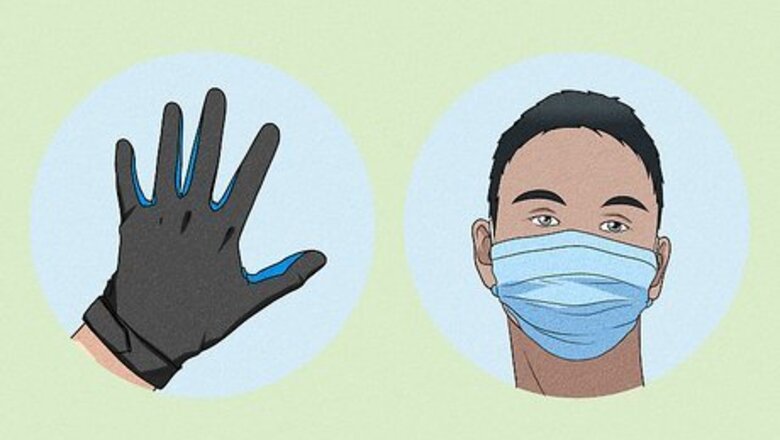
views
- Brush your walls with a hand brush or dust mop to remove the most drywall dust. Wear a dust mask and safety goggles to prevent irritation.
- Sweep the drywall dust on the floor into a large garbage bag to throw away immediately.
- Vacuum the walls, floors, and surfaces in the room with a wet/dry vacuum. Use brush and crevice attachments to suck up hard-to-reach dust.
Removing Drywall Dust

Put on a face mask, goggles, and gloves before cleaning. Because drywall dust contains gypsum and silica that could cause irritation, put on protective gear whenever you’re cleaning. Choose a tight-fitting face mask, goggles that completely cover your eyes, and rubber gloves. If you want to prevent drywall dust from getting on your clothes, then put on coveralls and shoe covers.
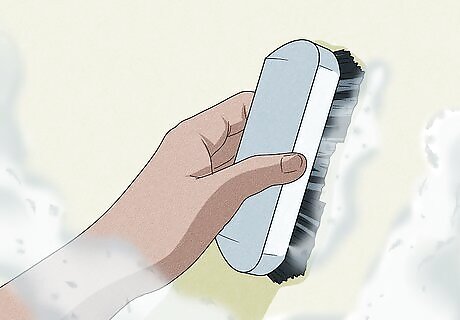
Brush drywall dust off of the walls with a hand brush or dust mop. Start with the brush or dust mop in the top corner of your wall, and slowly move it across the surface. Move back and forth across the top of the wall, and slowly work your way down toward the floor. Stop and shake the brush or mop off outside when it looks dirty to remove the excess dust. If you’re cleaning after fully remodeling the room, start by brushing the ceiling before the walls. Some people recommend spraying the drywall dust with water so it doesn’t get into the air while you’re brushing it, but the moisture could cause the dust to harden. Brushing also works if you have drywall dust on glass fixtures or window panes.
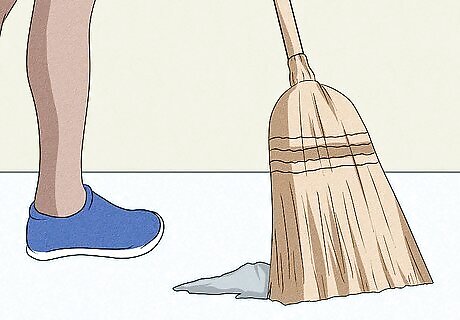
Sweep up as much drywall dust as you can. Raymond Chiu, a house cleaning professional, says that “it is important to sweep and pick up the dust slowly [because]...being too aggressive will cause the dust to go everywhere in the room.” He recommends sweeping the dust into a pile and collecting it in a garbage bag to throw away immediately. Start from the edges of the room and work your way toward the center. Keep sweeping your floors until most of the dust is gone so you can clean up the residue more easily. Use a standard broom to reach dust in the corners of the wall, and switch to a soft push broom to sweep larger areas of the floor. If you laid down a plastic drop cloth, slowly fold the edges toward the middle to trap the drywall dust inside. Throw the drop cloth out before sweeping the floor. If the dust kicks up into the air, try spreading a sweeping compound over your floor. The compound has a dust/sawdust-like consistency that holds the dust down so it’s easier to sweep up.
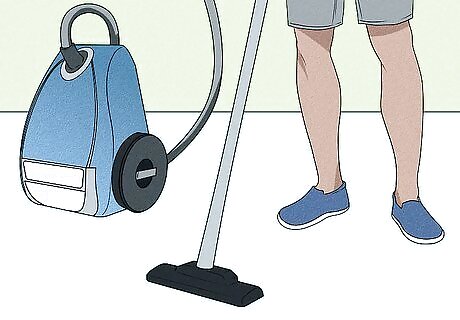
Clean the walls and floors with a wet/dry vacuum. Raymond Chiu, a cleaning professional, recommends using “a [brush or crevice] attachment to get the hard-to-reach areas,” like corners, between floorboards, and on any other hard surfaces. Start at the top of your walls and work down toward the floor using light pressure. Then, vacuum the entire floor. According to Chiu, you should avoid using your standard household vacuum because “a small or weak vacuum will not be effective in getting the dust out and it will more likely damage the vacuum.” Check with local hardware stores to see if they offer vacuum rentals so you don’t have to buy one. Wet/dry vacuums have a HEPA filter inside to catch dust, but they may get clogged while you’re cleaning. Wash the filter or keep a spare on hand if your vacuum starts working poorly. If you have drywall dust on furniture, bedding, or other upholstery, vacuum it thoroughly. If possible, take the dust-covered items outside so they can air out. Shake out the fabric or point a fan at it to blow out any of the dust.
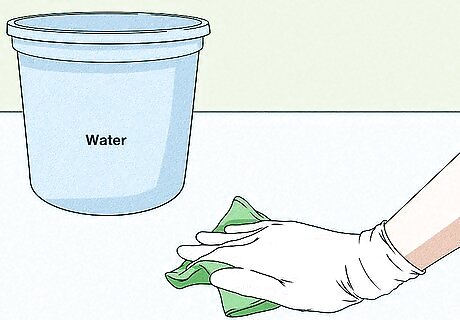
Spot-clean leftover residue with a damp microfiber cloth. Wet a cloth with clean water and wring it out completely. Wipe up any lingering dust that you see. Run the cloth over the walls, baseboards, windows, and other surfaces one more time. When the cloth looks dirty or covered in dust, rinse it out with clean water so you don’t spread dust back over the surface. Change out the water as soon as it gets cloudy. Avoid using a soaked cloth because too much water could damage drywall and cause mold to grow. Alternatively, you may use a tack cloth that’s made for picking up dust and small particle residue. If you’re trying to clean drywall dust that has hardened or is stuck, apply additional force or use a damp sanding sponge.
Protecting Surfaces from Drywall Dust
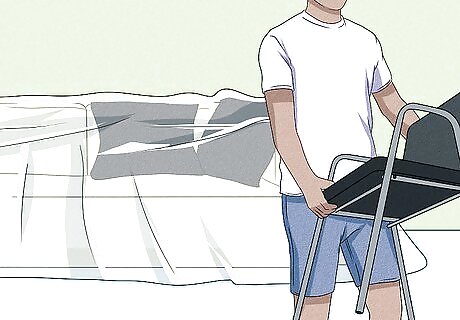
Cover the floor and furniture with plastic sheeting. Move as much furniture out of the room as you can while you’re working. Tape plastic sheeting over the pieces you can’t move, especially upholstered furniture, since the dust can work itself into the fabric. Then, lay sheets on the floor to catch the majority of the dust. If you have carpet in the rest of the home, consider covering the floors in every room with plastic lining to prevent residue from spreading.
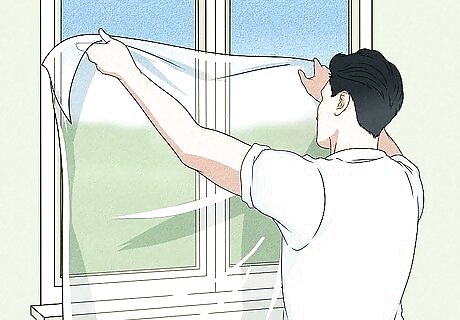
Seal vents and doorways with plastic sheeting. Heavy-duty plastic sheeting helps to minimize how much dust gets dispersed through the air. Cover all the openings throughout your workspace, such as doorways and air vents. For best results, hang the sheeting from floor to ceiling. Secure the edges of the plastic sheeting with masking tape to keep dust from getting underneath it.
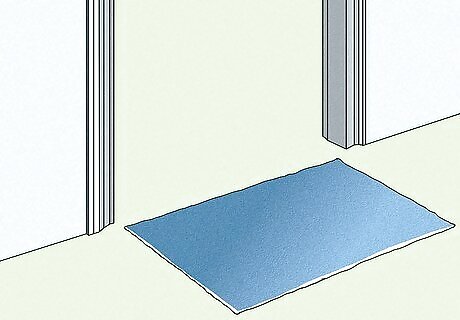
Designate one entryway into the work area. Choose one doorway to use as the entrance to the room where you’re working, and seal the other entryways off completely. Lay a mat in front of the entrance to wipe off your shoes and reduce the amount of dust you track into another room. If you’re doing work in your own home, keeping a change of clothes right outside your work area will prevent dust from spreading to other rooms. Limit access to the work area to people who are working on the renovation project so you’re less likely to track dust through other parts of your home.
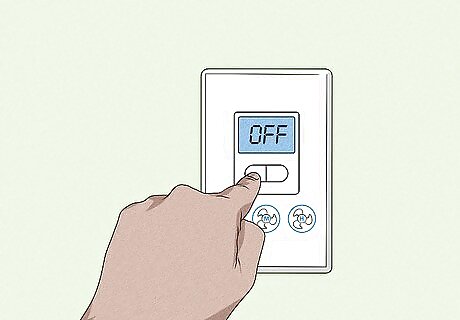
Turn off your home’s heating or cooling system. Leaving the system on will result in drywall dust getting into it, which will then spread throughout your home. Even though you’re covering all of the air ducts with plastic sheeting before you begin, still turn off the circulation system. Be sure to leave the HVAC system off until you’ve completed your renovation and clean-up. Check your system’s air filter frequently in the weeks after you sand your drywall to see if it’s clogged. If it is, replace the filter.
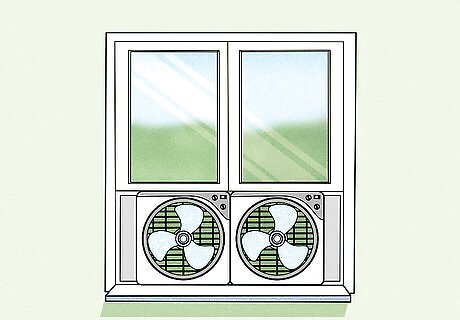
Place box fans in the windows. To help drywall dust move outside, house cleaning professional Raymond Chiu recommends that you “open the windows to allow for ventilation.” Place box fans in the windows so they blow the air out of the room, and tape plastic sheeting around the fans and window frames to seal off the area. If you’re able to, remove the window screens to allow the dust to move freely from inside to outside. If any of the windows have air conditioning units in them, remove them from the room because they get clogged with dust easily. Use the box fans on a low setting, which will cause the least air disturbance. Setting them on high will suck out a lot of the dust, but it will also increase the amount that’s moving through the air.




















Comments
0 comment